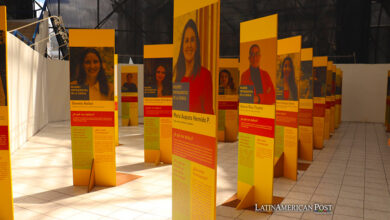Sweden’s Wooden Skyscraper To Confront Climate Change
A Swedish city recently finished a wooden skyscraper that can capture 9 million kilograms of carbon dioxide.

The Woman Post | Catalina Mejía Pizano
Listen to this article
Currently, the world is in a race against time to reach net-zero emissions by 2050, and city planners are finding creative ways to battle against climate change. A Swedish city recently finished a wooden skyscraper that can capture 9 million kilograms of carbon dioxide.
According to data from UN-Habitat Centre, cities consume 78% of the world’s energy and produce over 60% of greenhouse gas emissions. Air pollution is one of the most problematic environmental concerns associated with cities, and some of its causes involve traffic, heating systems, and construction sites. Fortunately, timber sequesters carbon dioxide, keeping it away from the atmosphere and permanently storing it. Wooden construction is no novelty in Skellefteå since this city has taken advantage of the abundance of nearby forestland, for construction, since the 18th century.
Skellefteå is one of the main cities that attract tourists in the Swedish Lapland and the subarctic region due to the various activities that it has to offer. Among other highlights, Skeleftea is recognized for its coastal life, wildlife, and fresh food from its local farms. Besides the mentioned activities, the Swedish city is now home to a cultural center built from over 12,000 cubic meters of timber that comes from forests just 60km away from town. The 75-meter-high Sara Cultural Centre, which is the second tallest wooden tower globally, will capture a total of 9 million kilograms of carbon dioxide in its lifespan. But this is not all! The building also counts on highly efficient solar panels to power it and store excess energy in the basement.
The Sara Cultural Centre is named after the famous Swedish writer Sara Lidman and holds a library, two art galleries, a conference center, and a hotel. It was designed by White Arkitekter, one of Scandinavia’s top architectural practices. They work in an international context to enable sustainable life through the art of architecture. The building was completed in September 2021 and was designed to produce zero emissions by employing a hybrid system of solar panels, heat pumps, and batteries connected to the city’s electricity and water supply network, enabling it to provide energy to the surrounding neighborhood.
Also read: THE ROLE OF LEBANESE WOMEN RELATED TO CLIMATE CHANGE
If you are now wondering why the building is named after Swedish author Sara Lidman, here is the reason. Sara dreamed of a place that would be a sustainable building throughout its life cycle, “a passive house for an active culture that uses local construction techniques and materials, built by local labor.” It is worth mentioning that Sweden ranks fourth in the EU in Eco-Innovation Index. Its national environmental policy strategy includes promoting the development of new technologies in areas such as green building, water resource management, and bioenergy. Emissions of carbon dioxide have been declining in Sweden in the past years. The country was the first Member State to meet the renewable energy targets for 2020 set by the European Union. The Sara Cultural Centre is an example of how ecological buildings can tackle climate change!




